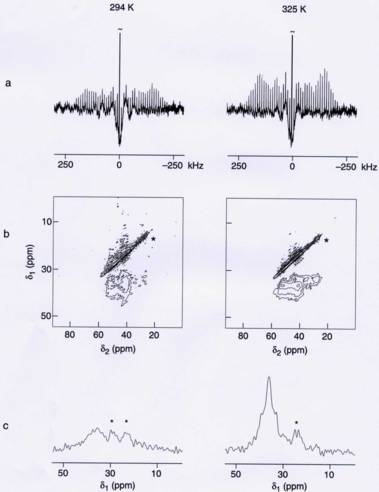 |
Abstract
Multiple-quantum (MQ) and satellite-transition (ST) magic-angle spinning (MAS) are two very similar techniques used to obtain high-resolution or "isotropic" NMR spectra of half-integer quadrupolar nuclei. In a variety of materials it is observed that some STMAS peaks are very broad compared with the corresponding MQMAS peaks, sometimes so broad that they are unobservable. We present 17O (I = 5/2) NMR spectra of two materials, chondrodite (2Mg2SiO4.Mg(OH)2) and clinohumite (4Mg2SiO4.Mg(OH)2), exhibiting this phenomenon and show that the cause is motional broadening arising from the combined effects of molecular reorientation, the quadrupolar interaction and MAS.
|

